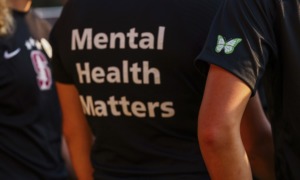 Just 10 years ago, the nation’s on-time high school graduation rate was hovering around 70 percent, where it had been stuck for decades. Today, the graduation rate is 82.3 percent, the highest in history. And, significantly, we’ve seen the greatest increases among students of color and students from low-income families.
Just 10 years ago, the nation’s on-time high school graduation rate was hovering around 70 percent, where it had been stuck for decades. Today, the graduation rate is 82.3 percent, the highest in history. And, significantly, we’ve seen the greatest increases among students of color and students from low-income families.
As a result, there have been about 2 million additional on-time high school graduates. That’s great news for those young people, their families and their communities.
There is no magic to this work. That progress is a testament to the fact that so many people subscribed to the big goal — a 90 percent on-time graduation rate by 2020 — and changed their expectations and behaviors, and stuck with it over time.
Still, this is hardly a high-five moment. More than half a million young people left high school without graduating in 2014, this year’s annual “Building a Grad Nation” report found. And sobering graduation gaps for certain student groups persist. We have our work cut out for us to ensure opportunity exists for every student.
Here are the numbers:
Students of color. Graduation rates for Hispanic/Latino students (76.3 percent) and African American students (72.5 percent) have yet to reach the 80 percent mark, and the gaps between them and white students, though narrowing, are still large.
Low-income students. Nearly half of the country’s 2014 graduating cohort — 47 percent — came from low-income families. Nationally, 74.6 percent of low-income students graduated on time in 2014, compared to 89 percent of non-low-income students.
Students with disabilities. Making up approximately 13 percent of all public school students nationwide, students with disabilities graduate at a rate of 63.1 percent nationally, while their general-population peers graduate at a rate of 84.8 percent — a gap of more than 21 percentage points. The gap between students with disabilities and those without ranges from 4.2 percentage points in Arkansas to 54.5 percent in Mississippi.
Twenty-nine states graduate 85 percent or more of their general population students, but only one state (Arkansas) graduates more than 80 percent of its students with disabilities. A whopping 33 states graduate less than 70 percent of their students with disabilities.
English-language learners. The national graduation rate for limited-English proficient students is 62.6 percent. Thirty-five states graduate less than 70 percent of English-language learners; seven of those states have ELL graduation rates under 50 percent.
Students experiencing homelessness. More than 1.3 million public school students have been identified as homeless, and that number is growing, according to the U.S. Department of Education. Given all the challenges they face, homeless students graduate from high school at significantly lower rates than their peers. We’ll know how much lower soon: The Every Student Succeeds Act requires, for the first time, that states and districts report high school graduation rates for homeless students, beginning with the 2016-17 school year.
The goal of a 90 percent graduation rate won’t be reached if we leave certain subgroups behind. But the challenge of raising graduation rates for all students doesn’t lend itself to easy answers.
Districts that are making progress are doing some combination of smart things. They are:
- using data to make decisions,
- working to increase teacher quality,
- raising expectations for all students,
- paying attention to early warning signs,
- adding more caring adults into the lives of young people living in challenging circumstances,
- fighting chronic absenteeism, and
- eliminating disciplinary practices that disproportionately impact students of color.
In today’s economy, a high school diploma doesn’t guarantee success, but the lack of a diploma consigns a young person to almost certain failure. It is our responsibility to prevent schools from foreclosing their students’ futures.
We’ve demonstrated that progress is possible. As you prepare for the start of a new school year, we must redouble our efforts to help millions more young people get and stay on track to adult success.
John Gomperts is president and CEO of America’s Promise Alliance, which launched the GradNation campaign to raise the national on-time graduation rate to 90 percent by 2020 and increase postsecondary enrollment and completion.































